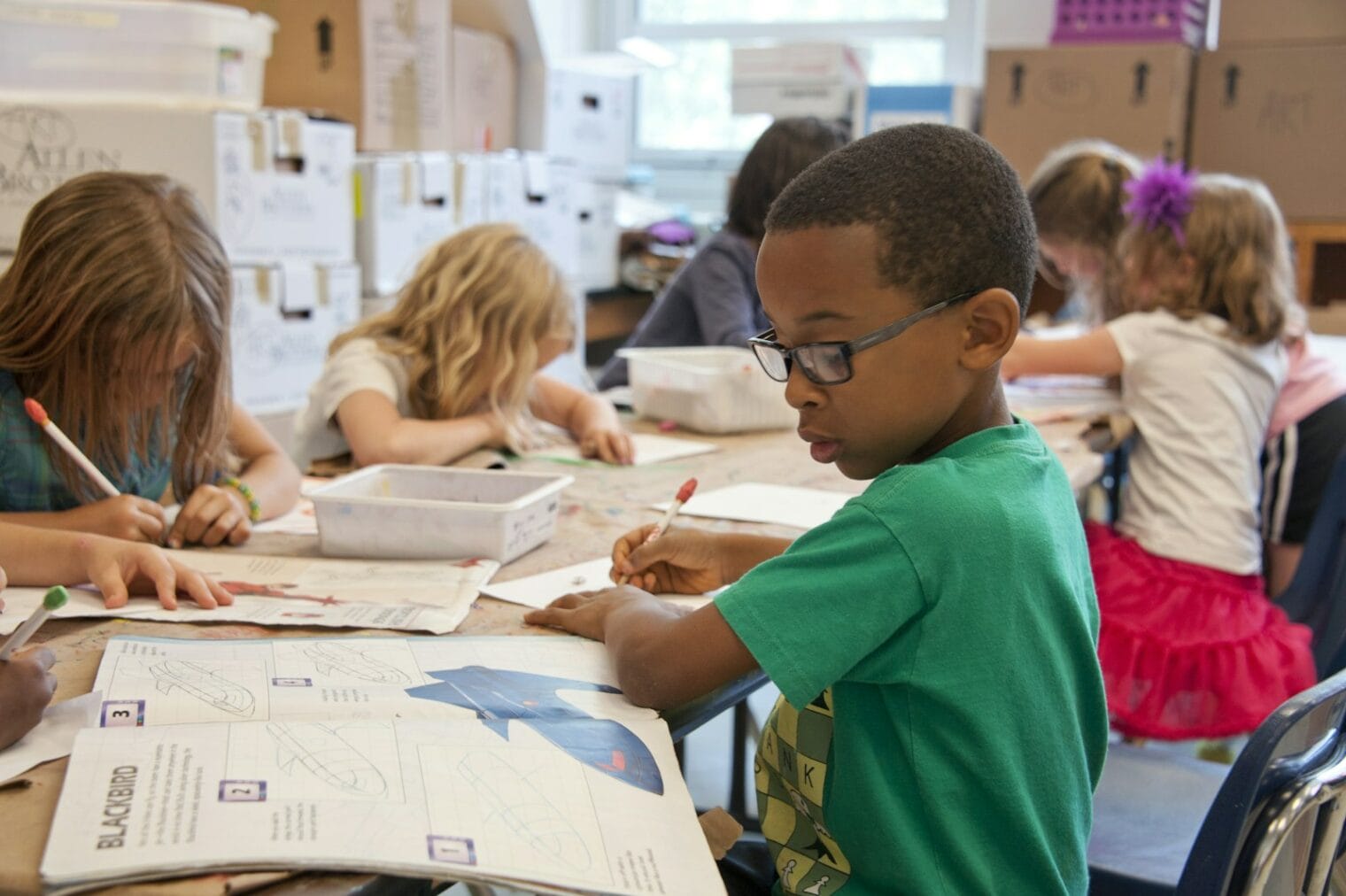Every student is unique: some children are naturally eager students who pick things up quickly. Some kids learn by doing. Some kids demonstrate fabulous talents in certain areas, but struggle significantly in other subjects. Some kids aim to please while others seem to enjoy chaos.
Despite their personality differences, schools are designed for the “average” student, and those with learning differences can get left behind if their instruction isn’t individualized to meet their needs. These students often have a miserable school experience as they watch their peers surpass them and wonder why they have such a hard time keeping up. They are susceptible to being misunderstood and exasperating to their teachers.
What are accommodations?
I think they can best be described as “things the school can be flexible about without making the actual material any easier.” Some teachers are naturally more flexible and accommodating in nature; some are a lot more strict. When a student’s educational team convenes to establish formal, legally-binding accommodations only, it’s called a 504 plan. This plan is the result of a meeting between the school and parents and constitutes the district’s agreement that they will ensure those accommodations are enforced.
There are many reasons why a student might need accommodations. Visually-impaired students would be at an unfair disadvantage if they were seated in the back of the class, far away from the board. In the back of the class, it would be very difficult to determine whether that student’s poor performance was due to their inability to see the board or because they don’t know the material. That’s a really concrete, common-sense example. It would be the same for a student with a cochlear implant – it must be established that they’re able to hear in order to judge their performance fairly.
Nobody would tell a visually- or hearing-impaired person that they just need to try harder to see or hear
Students with language barriers or attention and behavior problems, who are, in all other ways able-bodied, face a disadvantage because of the stigmatization and widespread misunderstandings about ADHD, autism, intellectual and learning disabilities such as dyslexia, which affects the ability to read and digest written material, or dysgraphia, which affects the way someone perceives and interprets numbers. Even students who are highly gifted may need accommodations in order to stay engaged with extra tasks and assignments so they aren’t bored.
These are the students who confuse grown-ups with their educational hills and valleys. They are the ones who will receive the most criticism and negative messages about themselves as they grow older, which can negatively alter their self-esteem, confidence, and relationships for life.
I’ve seen how educational accommodations can truly change the game for students with unique learning needs. When we adjust the learning environment to fit, we unlock their potential and set them up for a brighter future. In this blog post, I want to highlight why accommodations are so important, give some examples of effective strategies, and explain how they benefit not just students, but families, too.
A Deeper Dive into Accommodations
Educational accommodations are adjustments or modifications in the school environment that help students with learning differences access the curriculum and show what they know in the best way possible. These accommodations don’t change what’s being taught; they just provide different ways for students to engage with the material and demonstrate their understanding.
There are several types of accommodations:
- Presentation Accommodations: Changing how information is presented to the student, for example, using manipulatives to teach math.
- Response Accommodations: Allowing students to complete assignments and tests in different ways, like speaking or typing.
- Setting Accommodations: Changing the location or environment where a student learns; this is often a quiet room to minimize distractions.
- Timing and Scheduling Accommodations: Adjusting the time allowed for learning or testing.
Examples of Effective Accommodations
- Extended Time on Tests: Some students need more time to process information because of cognitive or processing challenges. Giving them extra time can reduce anxiety and give them a fair shot at showing what they know.
- Preferential Seating: Seating a student near the teacher or away from distractions can help them stay focused and engaged, especially if they have attention issues.
- Use of Technology: Tools like speech-to-text software, audiobooks, or screen readers can help students with dyslexia or visual impairments access the curriculum.
- Breaks During Instruction: Allowing short, frequent breaks can help students with attention or hyperactivity issues manage their energy and stay focused.
- Simplified Instructions: Breaking down complex instructions into smaller, manageable steps can help students with learning disabilities understand and complete tasks.
How Accommodations Help Academically
Accommodations aren’t a one-size-fits-all solution; they’re tailored to meet each student’s specific needs. Here’s how they can boost academic performance:
- Improved Engagement: Presenting information in a way that matches a student’s learning style can make them more interested and engaged in the subject.
- Enhanced Understanding: Simplified instructions and technology can help students grasp complex concepts they might otherwise struggle with.
- Reduced Anxiety: Knowing they have extra time or can take breaks can relieve some of the stress and anxiety around assessments, leading to better performance.
- Greater Independence: Using technology and other tools can help students work more independently, building their confidence and self-reliance.
Social Benefits of Accommodations
Accommodations don’t just help academically; they also play a big role in a student’s social development. Here’s how they contribute to positive social outcomes:
- Increased Participation: By leveling the playing field, accommodations let students take part more fully in classroom activities and discussions, making them feel more included.
- Improved Peer Relationships: When students can engage with the curriculum and classroom activities, they’re more likely to form positive relationships with their peers.
- Boosted Self-Esteem: Successfully handling academic challenges with the help of accommodations can significantly boost a student’s self-esteem and confidence.
- Better Behavior: Addressing students’ specific needs can lead to fewer behavioral issues. When students feel supported and understood, they’re less likely to act out in frustration.
The Importance of Seeking Accommodations
Even with all these benefits, some parents and educators hesitate to seek accommodations, either because they don’t fully understand them or worry about what others might think. But seeking accommodations is a proactive step towards ensuring a child’s success. Here’s why it’s important:
- Early Intervention is Key: The sooner a student gets the support they need, the better their chances of overcoming challenges and succeeding academically.
- A Team Effort: Developing and implementing accommodations is a team effort that involves teachers, parents, and specialists working together to support the student.
- Legal Rights: Students with learning differences are entitled to accommodations under laws like the Individuals with Disabilities Education Act (IDEA) and Section 504 of the Rehabilitation Act. These laws ensure students get the support they need to access a free and appropriate public education.
- Long-Term Benefits: Effective accommodations can have long-term benefits, including higher graduation rates, increased college enrollment, and better job prospects for students with learning differences.
In Summary…
Educational accommodations are a powerful tool for helping students with learning differences reach their full potential. By providing the right support, we can improve academic performance, enhance social outcomes, and create a more inclusive and fair learning environment. As a school psychologist, I urge parents and educators to advocate for accommodations and work together to make sure every student has the chance to succeed. Investing in accommodations isn’t just about meeting legal requirements; it’s about recognizing each child’s unique strengths and giving them the tools they need to thrive and grow into the best version of themselves.









Leave a Reply